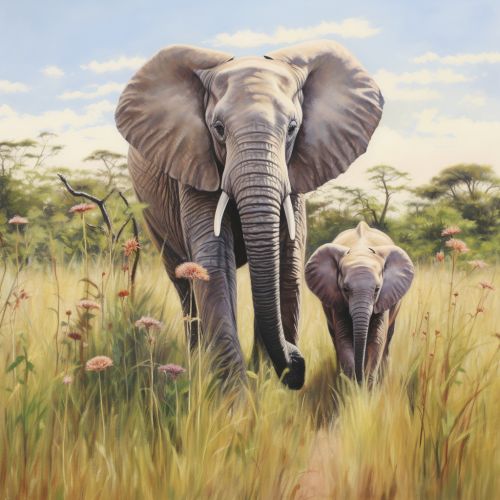K-Selected Species
Overview
K-selected species are a type of species in population ecology. They are characterized by slow maturation, few offspring, high parental care and longer life spans. These species are often larger and have a greater life expectancy than r-selected species, which are characterized by high growth rates, produce many offspring, and offer little or no parental care.
K-selected species are typically found in stable, predictable environments where competition for resources is high. They are often dominant in such environments due to their ability to outcompete other species for resources. In contrast, r-selected species are typically found in unstable, unpredictable environments where competition for resources is low.
Characteristics
K-selected species have a number of distinguishing characteristics. These include:
- Slow maturation: K-selected species often take a long time to reach sexual maturity. This is in contrast to r-selected species, which typically reach sexual maturity quickly.
- Few offspring: K-selected species typically produce fewer offspring than r-selected species. However, these offspring often have a higher survival rate due to the high level of parental care they receive.
- High parental care: K-selected species typically provide a high level of care for their offspring. This can include feeding, protecting, and teaching the offspring necessary skills for survival.
- Longer life spans: K-selected species typically live longer than r-selected species. This is due to their slower rate of maturation and their ability to survive in stable environments.


Examples
Examples of K-selected species include elephants, humans, and whales. These species all have long gestation periods, produce few offspring, and provide a high level of care for their offspring.
- Elephants: Elephants have a gestation period of up to 22 months, the longest of any land animal. They typically give birth to one calf at a time, which they care for diligently. Elephants also have a long lifespan, with some individuals living up to 70 years.
- Humans: Humans have a gestation period of approximately 9 months and typically give birth to one offspring at a time. Human parents provide a high level of care for their children, often for many years. Humans also have one of the longest lifespans of any species, with some individuals living over 100 years.
- Whales: Whales have a long gestation period and typically give birth to one calf at a time. Whale mothers provide a high level of care for their calves, often nursing them for several years. Whales also have long lifespans, with some species living up to 200 years.
K-selection and r-selection
The concepts of K-selection and r-selection were first introduced by ecologists Robert MacArthur and E.O. Wilson in 1967. They proposed that these two strategies represent opposite ends of a continuum, with many species falling somewhere in between.
K-selected species are adapted to stable, predictable environments. They are often dominant in such environments due to their ability to outcompete other species for resources. In contrast, r-selected species are adapted to unstable, unpredictable environments. They are often opportunistic, taking advantage of temporary abundance of resources.
